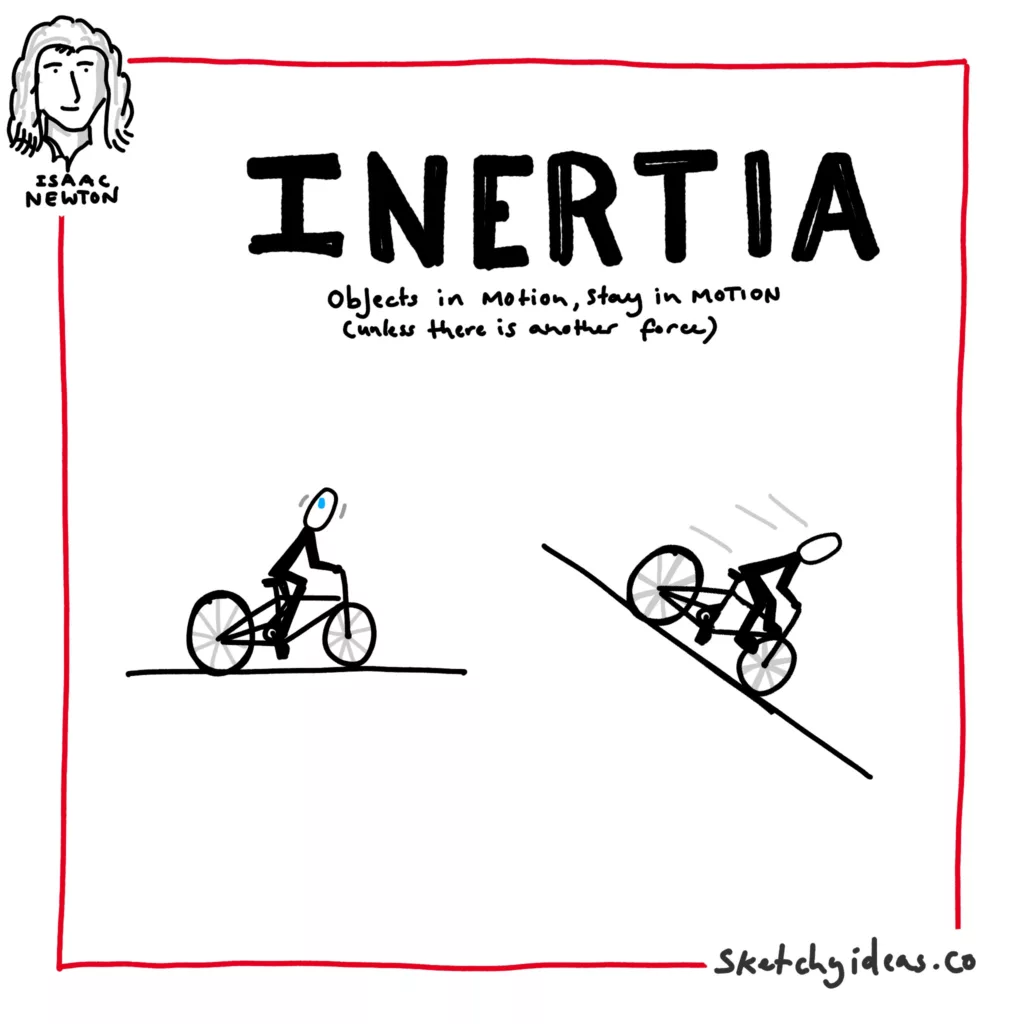Inertia is an idea that came from physics.
But its applications aren’t limited to that field. It can be used as a mental model that can help us break bad habits, cultivate positive ones and achieve meaningful changes.
Let’s take a look at inertia and how we can apply it in our daily lives.

What is Inertia?
Inertia is the resistance to change.
It comes from Newton’s First Law of Motion which states that an object at rest tends to stay at rest, and an object in motion tends to stay in motion (unless acted upon by an external force). This means getting things moving is difficult, but once they are moving, it’s easier to keep them going.
In our lives, inertia means we tend to maintain the status quo, stick to the same routines, and don’t step out of our comfort zones. And to make change, you need a lot of effort.
The effects of inertia in our daily lives
Our propensity to not change has some major impacts every day.
Bad Habits
Why is it so hard to shift a bad habit?
Inertia provides part of the answer. It takes far more effort to make a change that to keep doing the same things (even if they are bad). But using the mental model of inertia, we can effectively form new patterns and break free.
Our fear of change
Most people don’t want to change.
Even good changes!
Really, many of us say we want to change, but our actions reveal that we’d rather stick with things as they are. It’s all because change mean something unknown, and that’s scary. This fear of change creates internal resist we must overcome if we are to change.
Inertia prevents us from taking risks, exploring new paths, and reaching our full potential.
Procrastination and stagnation
If you’re procrastinating, it’s probably due to inertia.
The longer we delay taking action, the stronger inertia’s grip becomes. So inertia doesn’t actually reduce over time, it increases. And this leaves us feeling stuck and unfulfilled.
The longer you wait to make a change, the harder it will be.
4 tips to help you overcome inertia
- Recognise where inertia is affecting you: Noticing is often the key step to change. By acknowledging where inertia is holding us back (and helping us!) we can start to plan to change and overcome these barriers.
- Start small and build momentum: It’s near impossible to go from 0 to 100 instantly. Instead, it’s easier to build up momentum over time by taking small steps towards change. By breaking tasks or goals into manageable chunks, we see our progress and so build momentum instead of getting discouraged.
- Embrace the discomfort of change: Change is uncomfortable. Even when we want things to change, it’s hard to leave our comfort zone. We need to accept that our change will be uncomfortable and at the same time grow our passion for the potential outside our comfort zone.
- Get external support: Changing the people around you is one of the easiest ways to change your actions. This applies to individuals (like getting a personal trainer) as well as groups (like joining a sports team). And these likeminded individuals can also inspire and encourage you during your change.
Overcoming inertia for meaningful change
Change is difficult.
Mental inertia, like the physical force, is extremely difficult to overcome. But acknowledging its presence and acting accordingly are key steps. If you are looking to change, then this mental model can help you work out how to make significant progress in your life.
Good luck on your journey.
It all starts with a single step.

Leave a Reply